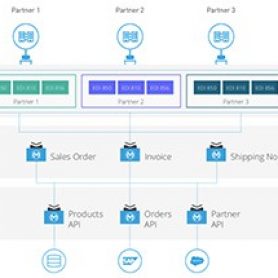What is a service mesh and do you need one?
Studies show that 91% of enterprises are using or have plans to use microservices. The reasons are well documented — monolithic architectures are hard
Anypoint Platform Quarterly FAQ – Q4
Author, Laurell K. Hamilton, wrote “Questions are great, but only if you have the answers.” Many of you have questions about the Anypoint Platform
The perfect service-abstraction and composition solution: MuleSoft Anypoint Platform
This blog post is based on the internal work of Thomas Baumgart, former MuleSoft Client Architect, and is now being published by MuleSoft. This
Mule containerization
Containers are becoming the de-facto hosting platform from microservices to databases and everything in-between. Kubernetes has emerged as the primary container orchestration platform, and
So, is a modern microservices architecture the ultimate answer to everything?
This is the third blog in a series explaining how MuleSoft’s Anypoint Platform can provide agile connectivity across monolith, SOA, and microservices architectures. In
Event-driven architectures and the AsyncAPI specification
I’m at the Barcelona airport. It’s summer and I’m finally going to visit my family in Badajoz after a long period. The queue at
The road to microservices: an overview of architectures
This is the second blog in a series explaining how MuleSoft's Anypoint Platform can provide agile connectivity across monolith, SOA, and microservices architectures In
EDI with an API-led approach
When EDI first came into use, supply chains were simpler, with a limited number of suppliers. Now, thanks to globalization and specialized manufacturing, there
K8s: 8 questions about Kubernetes
This is the first post in a series that intends to provide context and practical information about emerging enterprise technologies. First up is Kubernetes,
Have a safe microservice journey!
An architecture needs to bend, not break, as new innovations, best practices, and needs emerge. In this post, I’ll explore the broader landscape we






















